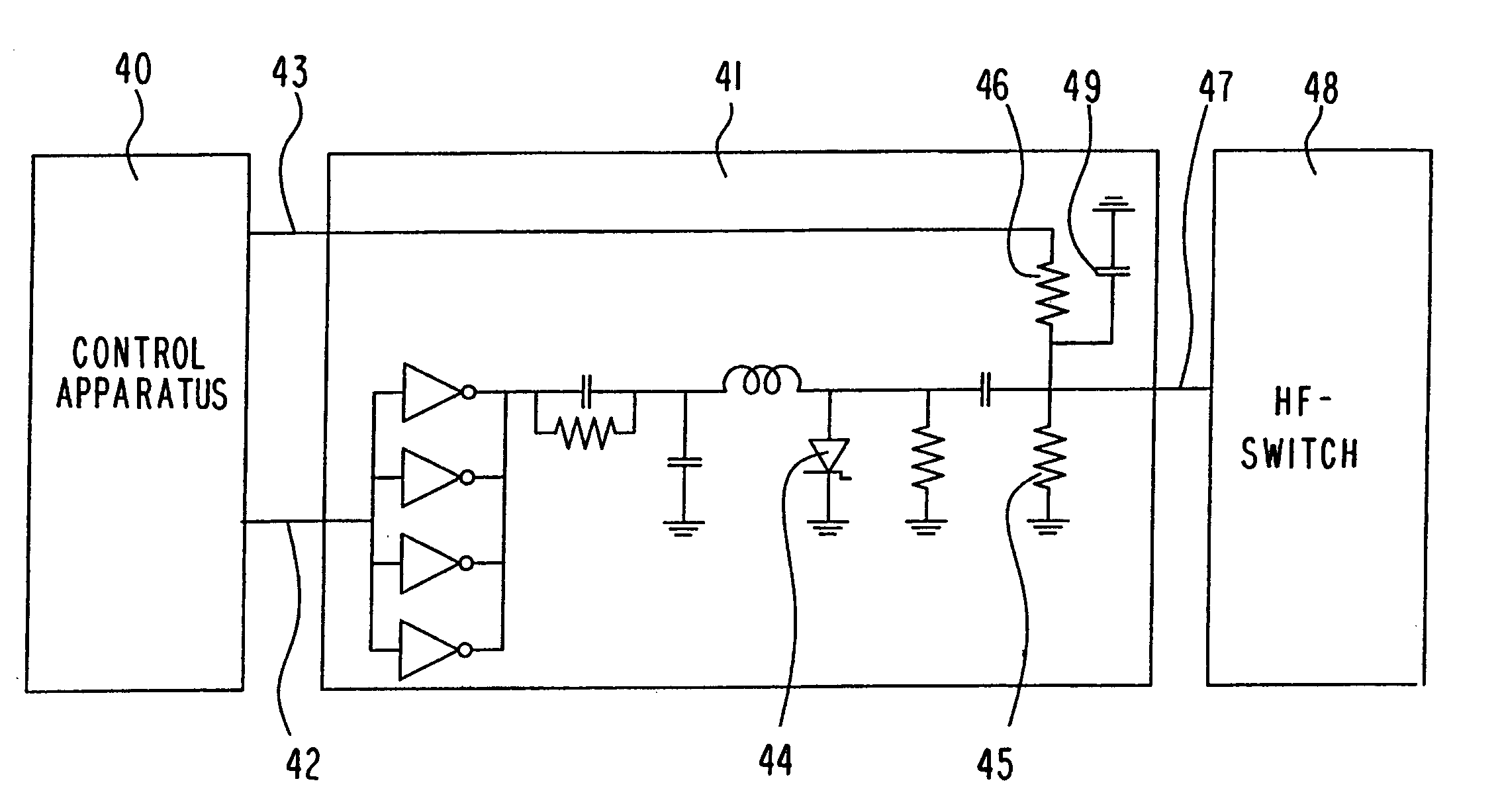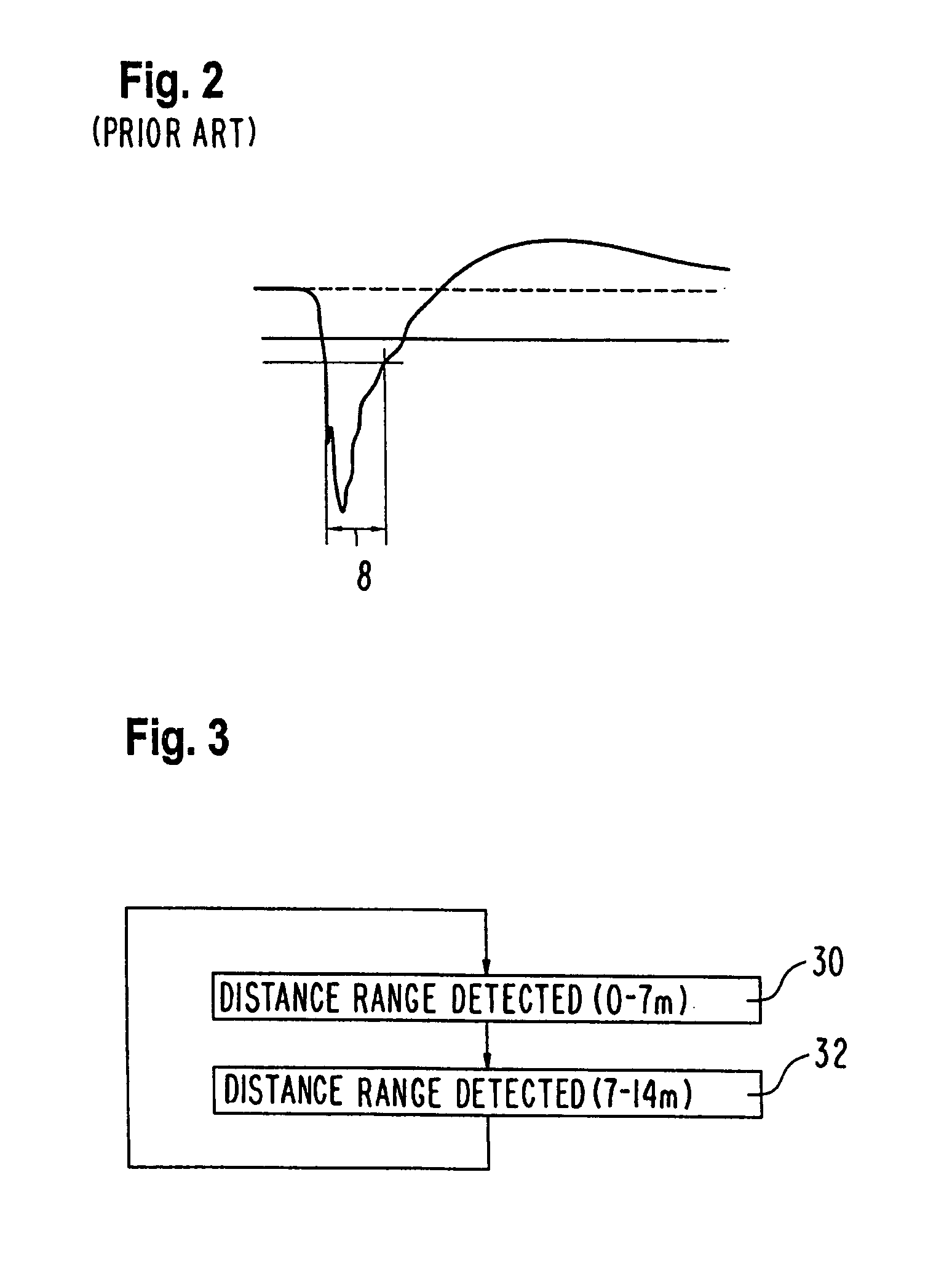Short-range radar system with variable pulse duration
a short-range radar and variable pulse duration technology, applied in pulse techniques, instruments, measurement devices, etc., can solve the problem of reducing spatial selectivity in the second, and achieve the effect of extending the range of distance of a short-range radar system
- Summary
- Abstract
- Description
- Claims
- Application Information
AI Technical Summary
Benefits of technology
Problems solved by technology
Method used
Image
Examples
Embodiment Construction
[0021]FIG. 3 shows a flow diagram for operating a short-range radar system. In step 30, the distance region of 0 m to 7 m in the detection region is sensed by the radar sensor of the short-range radar system. This takes place with a fixed impulse width, for example, of 400 ps, as is known in the state of the art.
[0022]In step 32, a further distance range, for example, of 7 m to 14 m is detected by the short-range radar sensor. In this second distance range, the detection takes place with an enlarged pulse width. For example, for the entire second detection range, a fixed, longer impulse width is selected. Preferably, the impulse width varies within the second distance region, for example, linearly increases with increasing distance.
[0023]FIG. 4 shows a block diagram of an embodiment of an inventive short-range radar system. The short-range radar system includes a control apparatus 40, which controls an HF-impulse generator 41. The HF-impulse generator 41 has an input 42 for informat...
PUM
 Login to View More
Login to View More Abstract
Description
Claims
Application Information
 Login to View More
Login to View More - R&D
- Intellectual Property
- Life Sciences
- Materials
- Tech Scout
- Unparalleled Data Quality
- Higher Quality Content
- 60% Fewer Hallucinations
Browse by: Latest US Patents, China's latest patents, Technical Efficacy Thesaurus, Application Domain, Technology Topic, Popular Technical Reports.
© 2025 PatSnap. All rights reserved.Legal|Privacy policy|Modern Slavery Act Transparency Statement|Sitemap|About US| Contact US: help@patsnap.com



